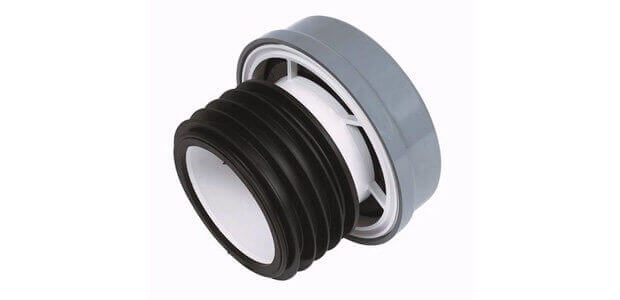How To Use An Air Admittance Valve
What is an Air Admittance Valve?
Air admittance valves are an important element of any soil and waste system. When any wastewater flows inside a soil pipe, for example when a WC is flushed, negative pressure builds up inside the waste pipe causing a siphoning effect - it is exactly the same type of cause and effect as when leaves and litter are drawn along the street behind a bus.
If this pressure was left unchecked, water would be siphoned out of the waste traps in the bath, basin or sink, which would in turn allow the escape of foul drain odours to enter the bathroom or kitchen through the dry trap.
| AIR ADMITTANCE VALVE |
 |
The traditional way to prevent this from happening was to have a vent pipe connected to the drain that is open to the atmosphere. As the siphoning pressure builds up inside the soil pipe, air is drawn in through the open vent pipe to balance the negative pressure again. However as the vent pipe is basically an open end of a drain, there are regulations preventing such pipes from finishing near any opening window, including roof windows.
This meant that traditionally vent pipes needed to terminate well above the eaves, which is both unsightly and creates health and safety issues for installations. The best solution to this problem is to fit an air admittance valve.
How Do Air Admittance Valves Work?
Air admittance valves, also referred to in the industry as durgo valves, are basically a cleverly designed one-way valve that is fitted to the top of the soil pipe. When siphoning pressure builds up within the pipe system the valve opens to allow air in, balancing the pressure. Crucially though when the valve operates, it only opens one-way - although clean air is drawn into the pipe, no foul air is able to escape into the room.
Where Should An Air Admittance Be Installed
You should install an air admittance valve on a soil pipe at least 200mm above the highest water entry point on the system – that is the highest point that water can normally reach in a soil pipe. For aesthetic purposes though they are usually installed in the loft or in a duct or cupboard, which are easy to access.
Can Air Admittance Valves Be Used Outside
Most manufacturer's valves must be used internally, but the Floplast AX110 external air admittance valve can be installed outside as it incorporates both insect and frost protection. This means that if you are replacing an external soil stack you can fit an AX110, avoiding the need to take the soil pipe above the level of the eaves.
How Do They Fit To The Soil Pipe?
External air admittance valves incorporate rubber fins for a push fit joint into the soil pipe, not unlike the joint on a WC pan connector. Internal valves are usually solvent welded to the soil pipework system, but push fit versions are also available.
Are Different Colour Options Available For Air Admittance Valves
Floplast’s internal and external air admittance valves are both made in grey, black and white












